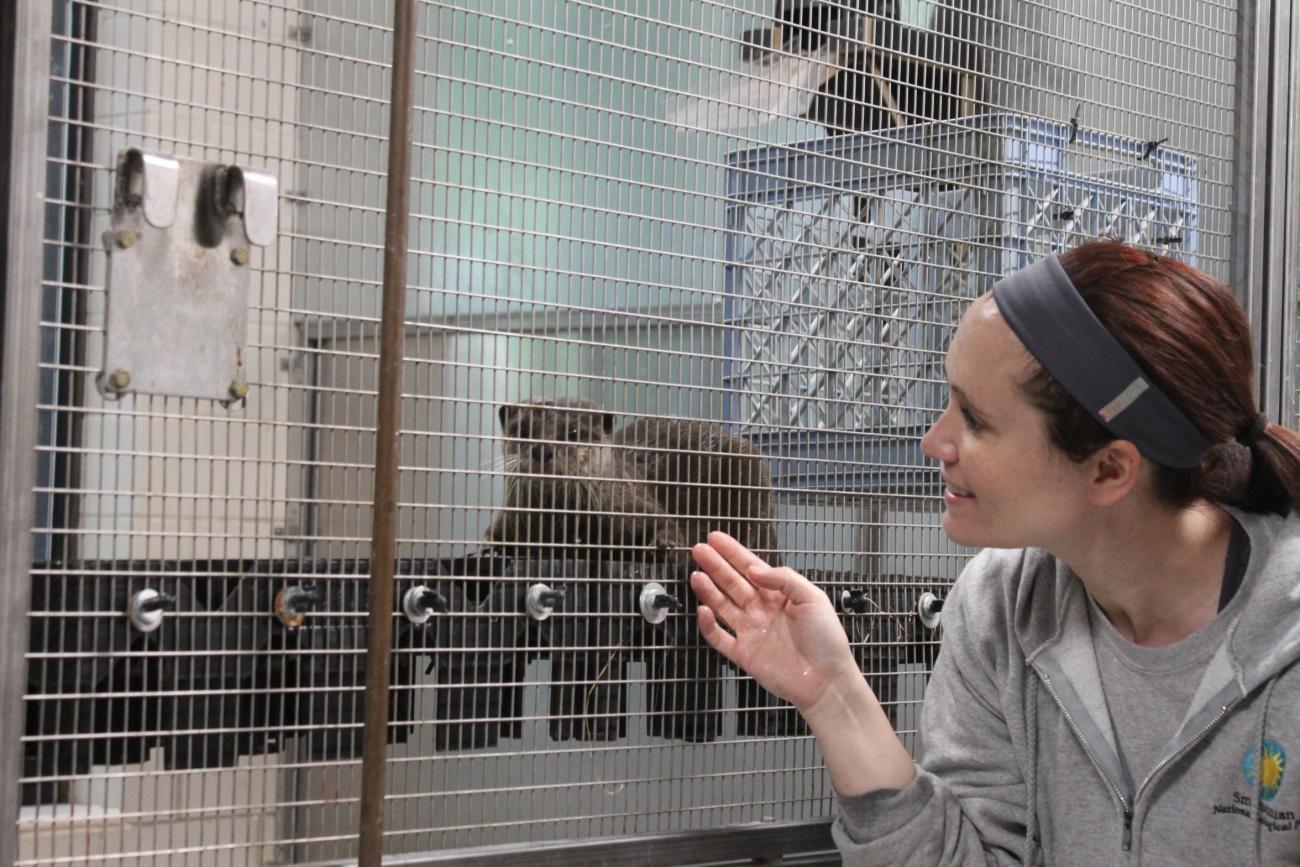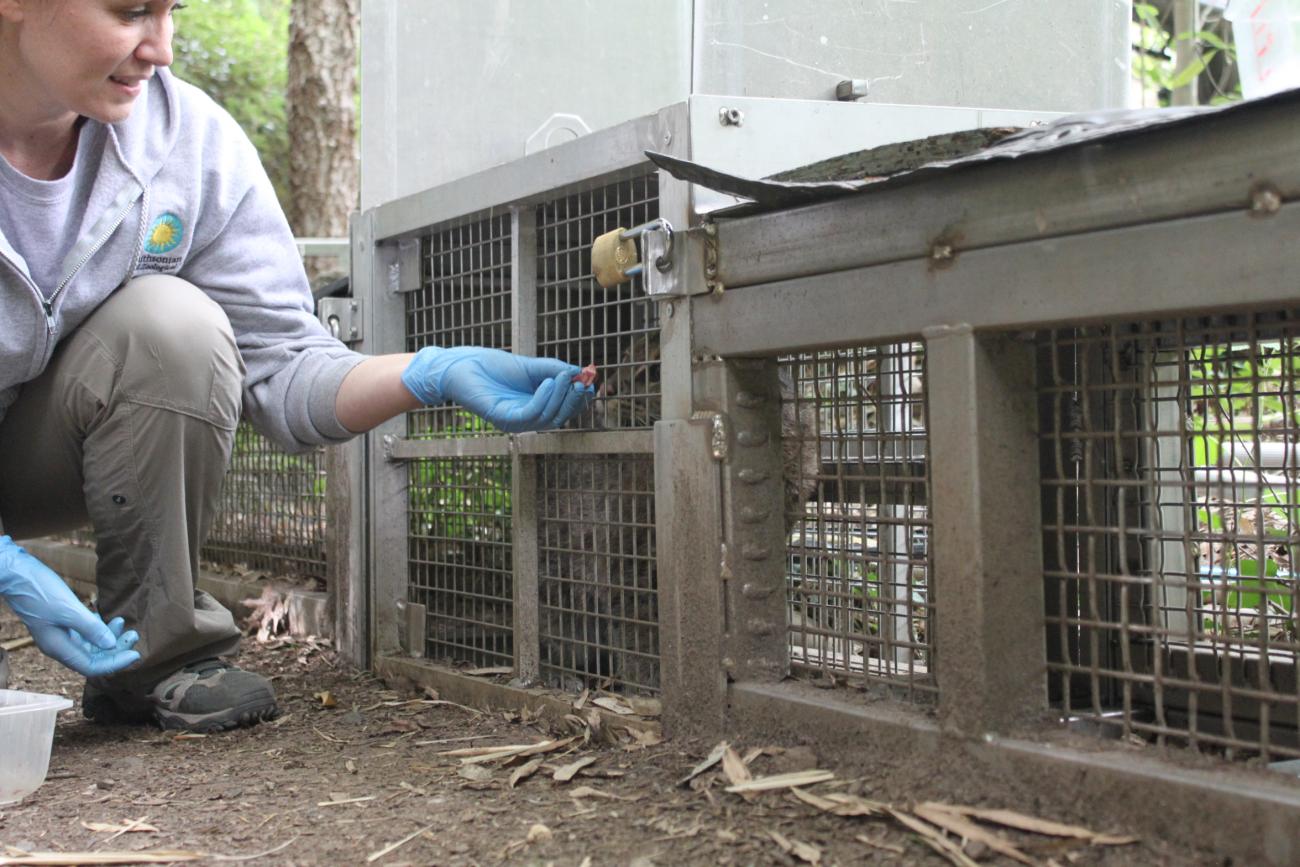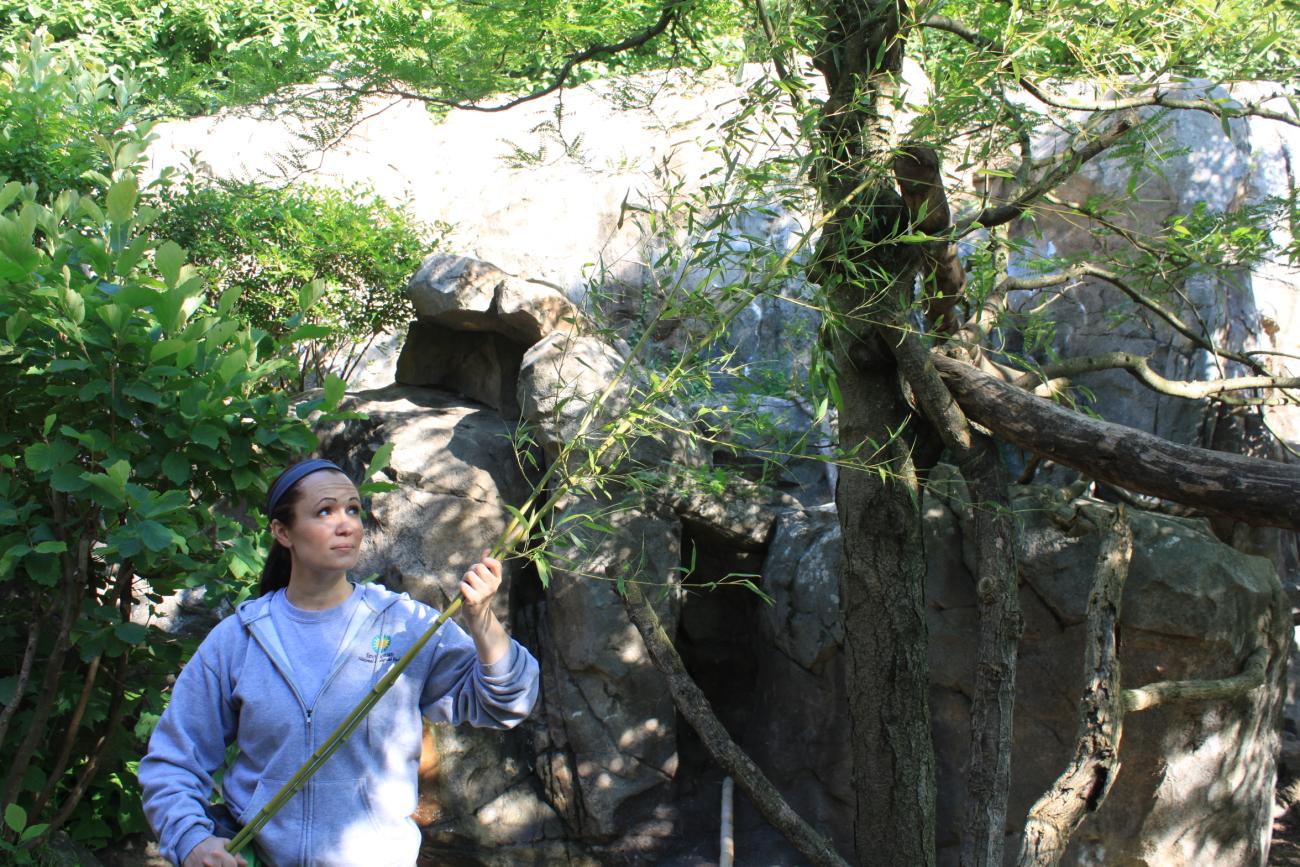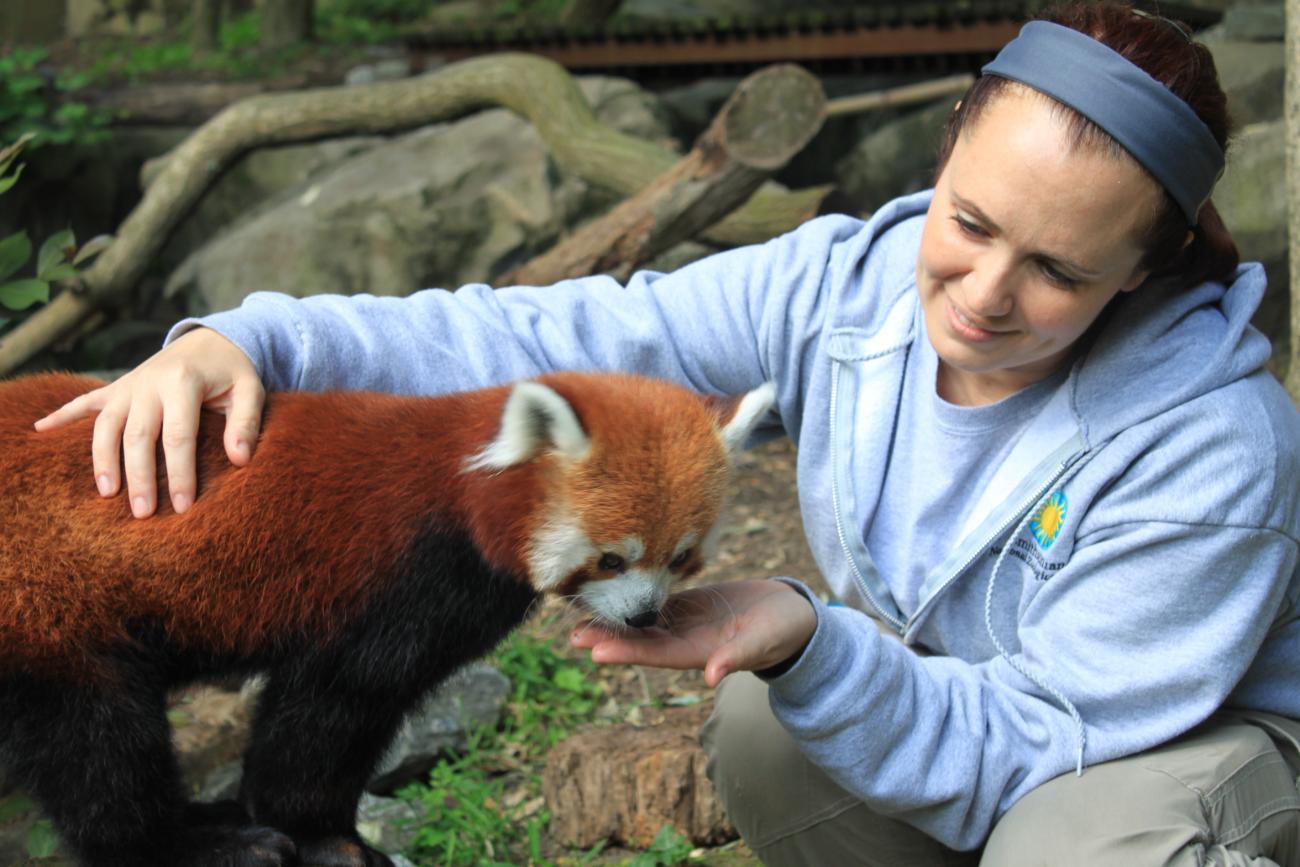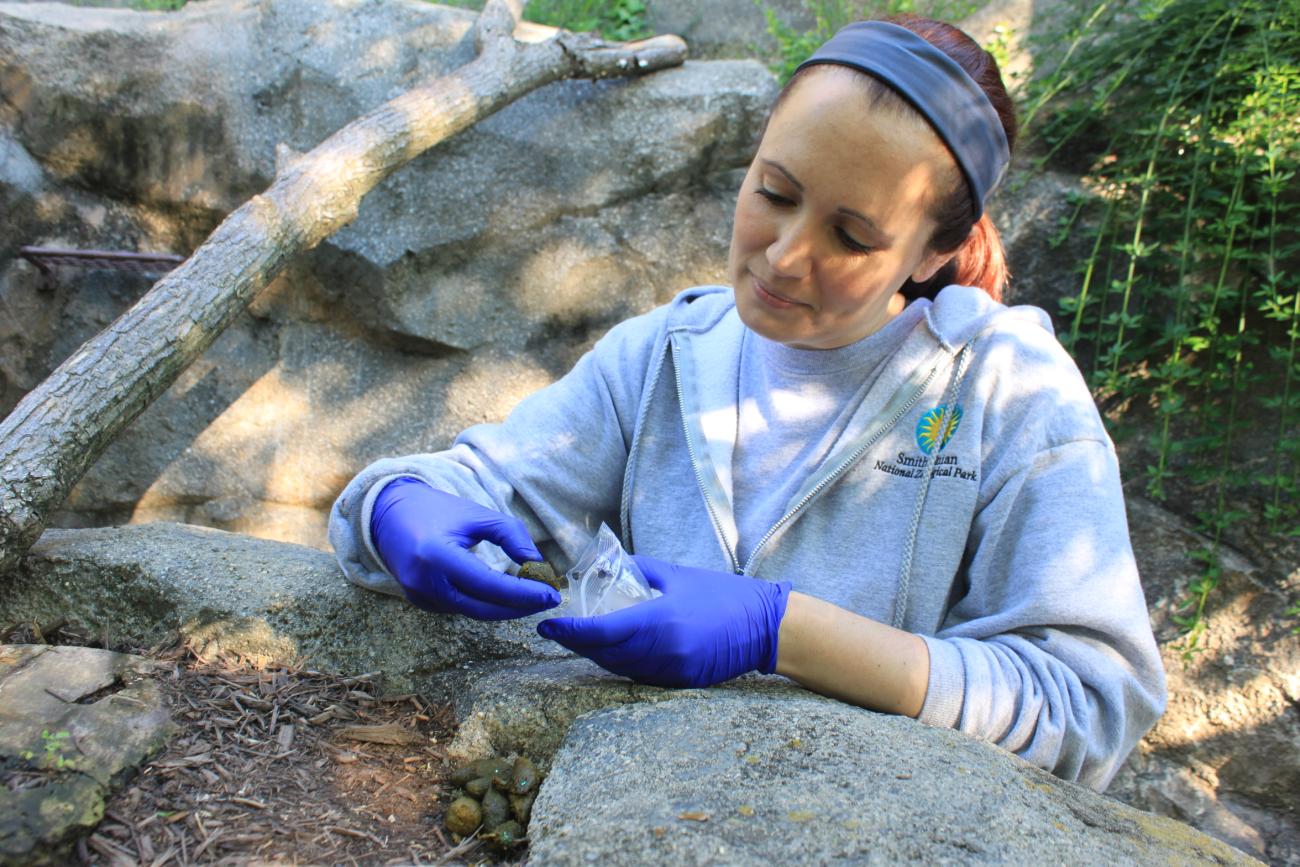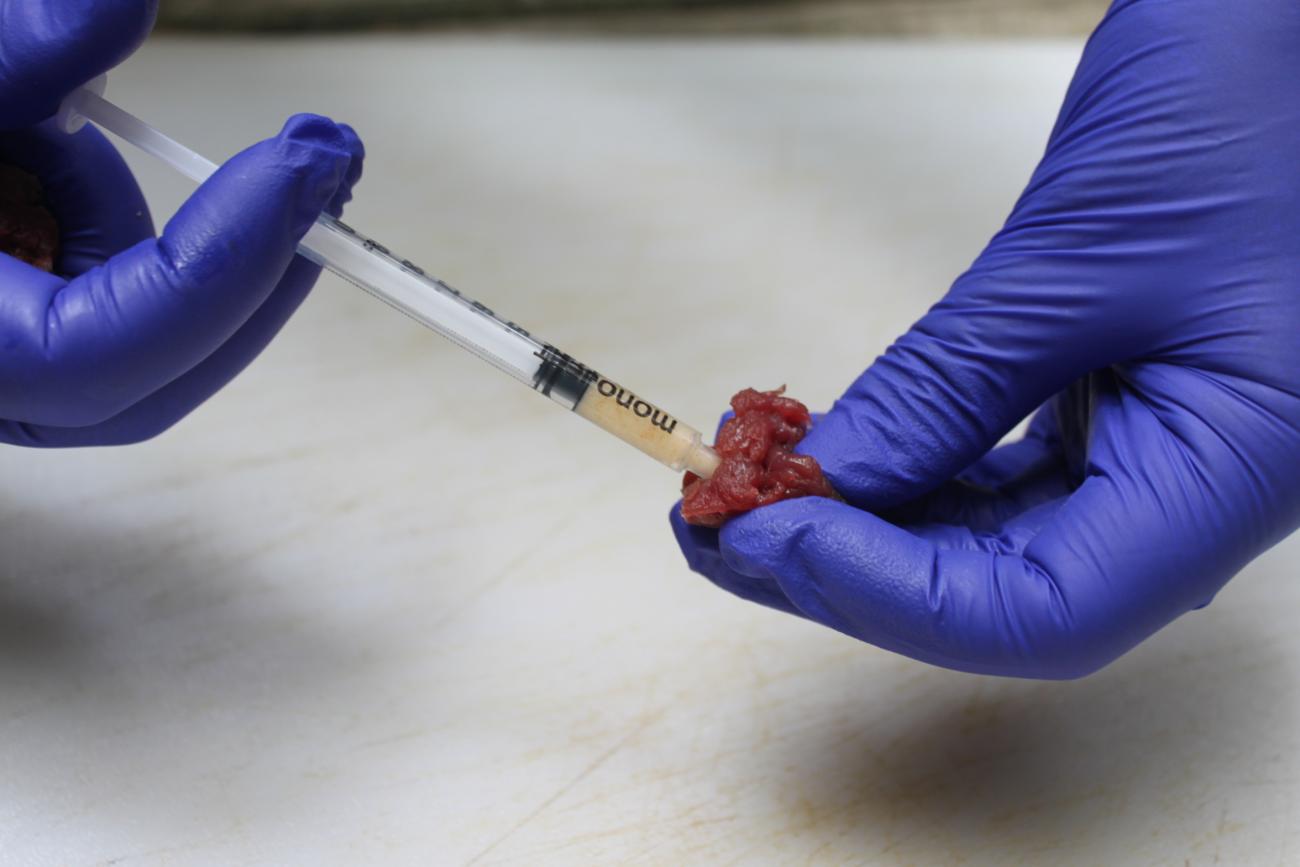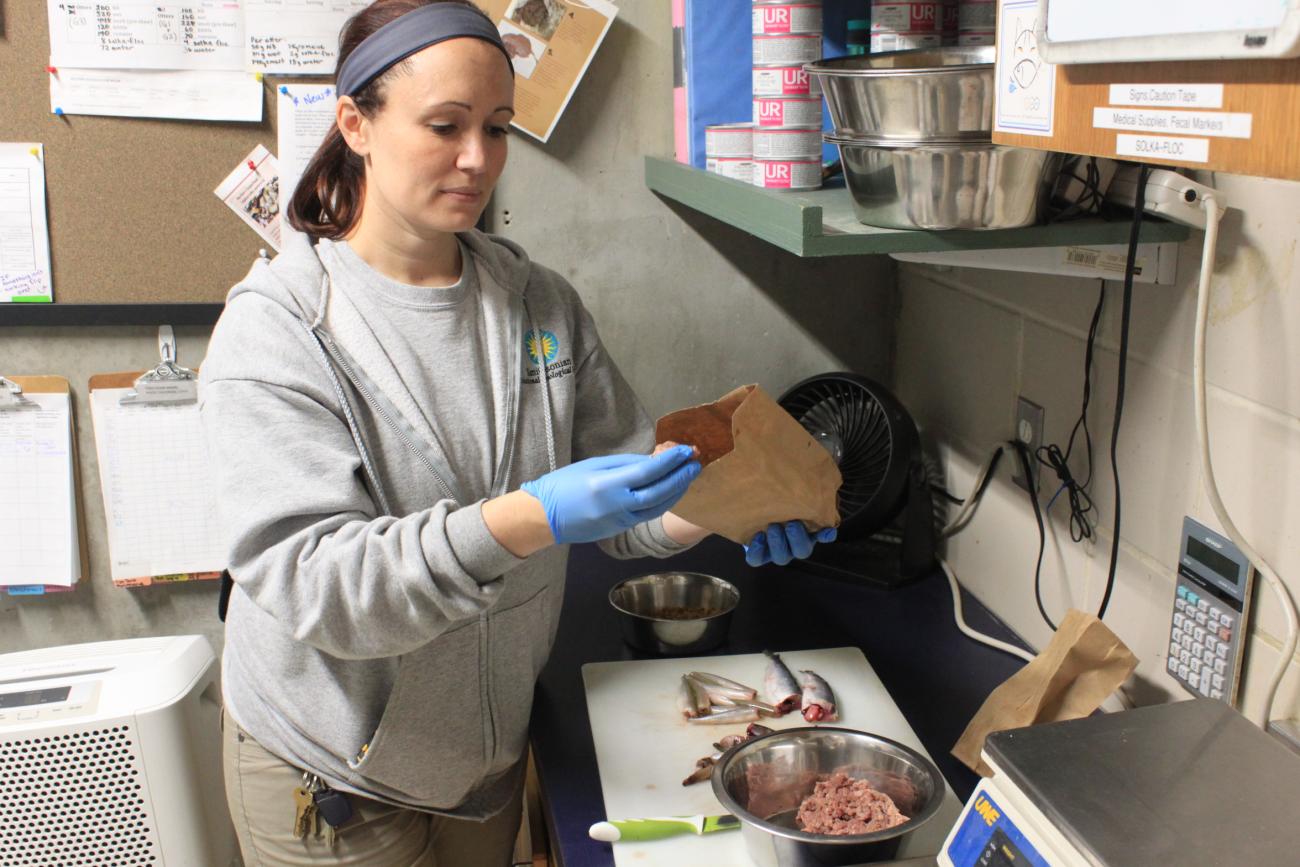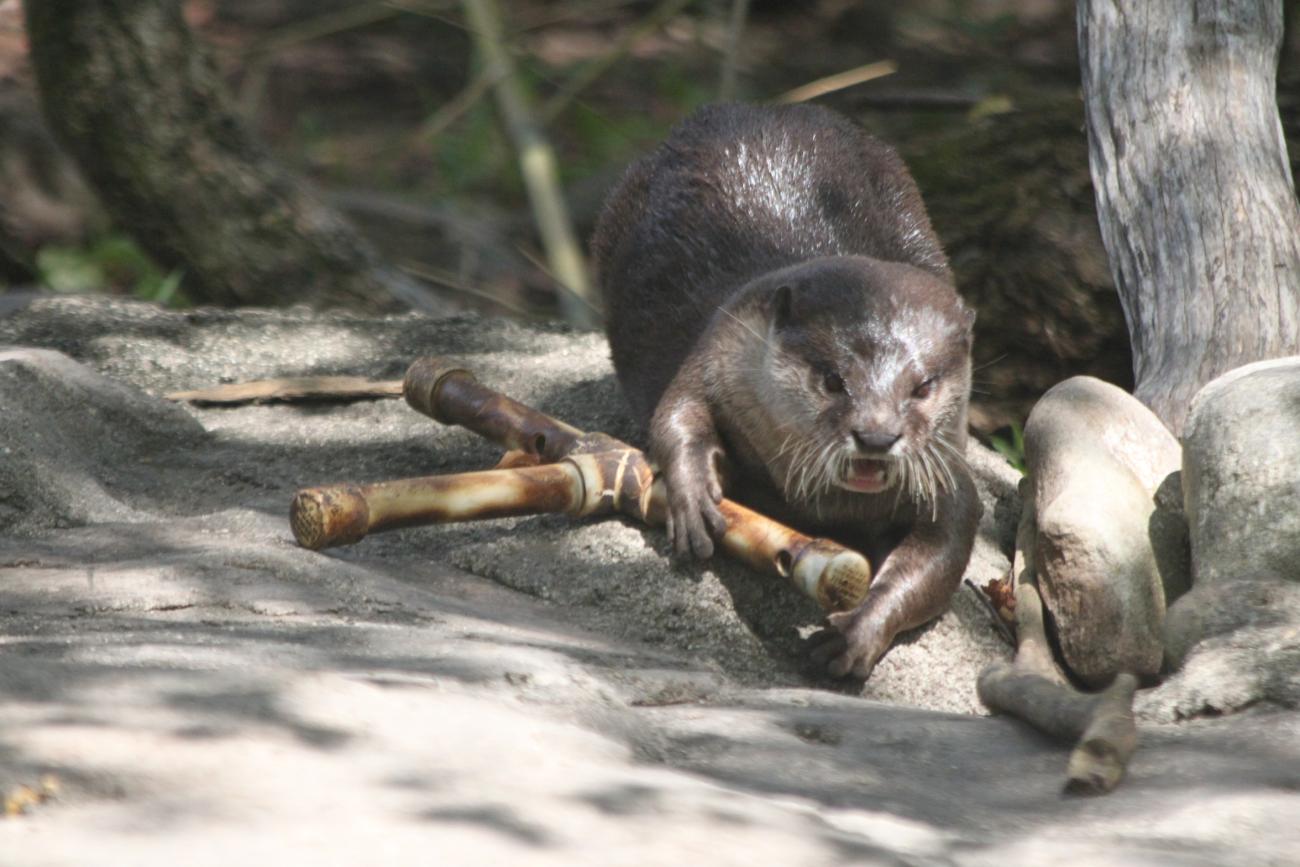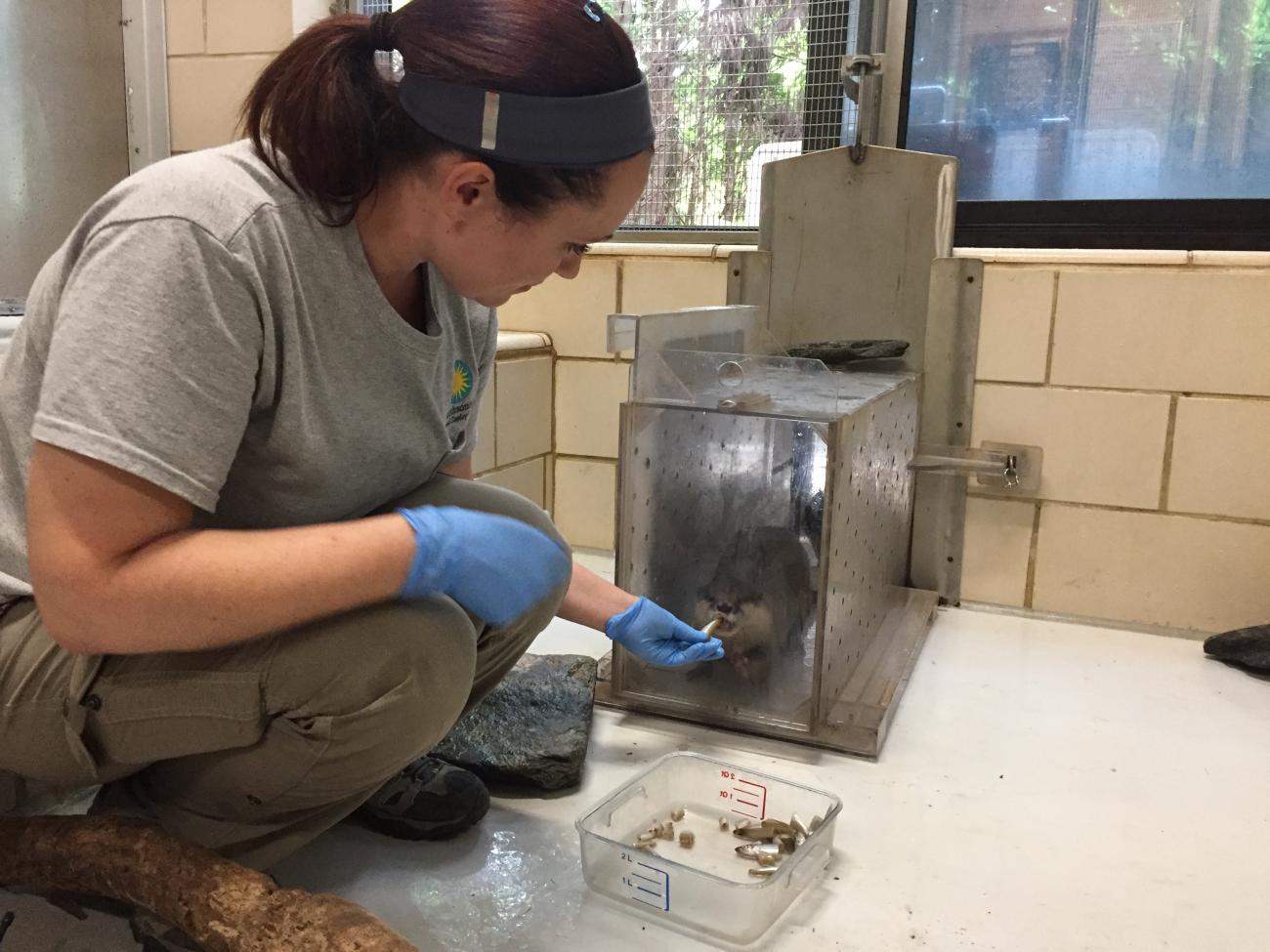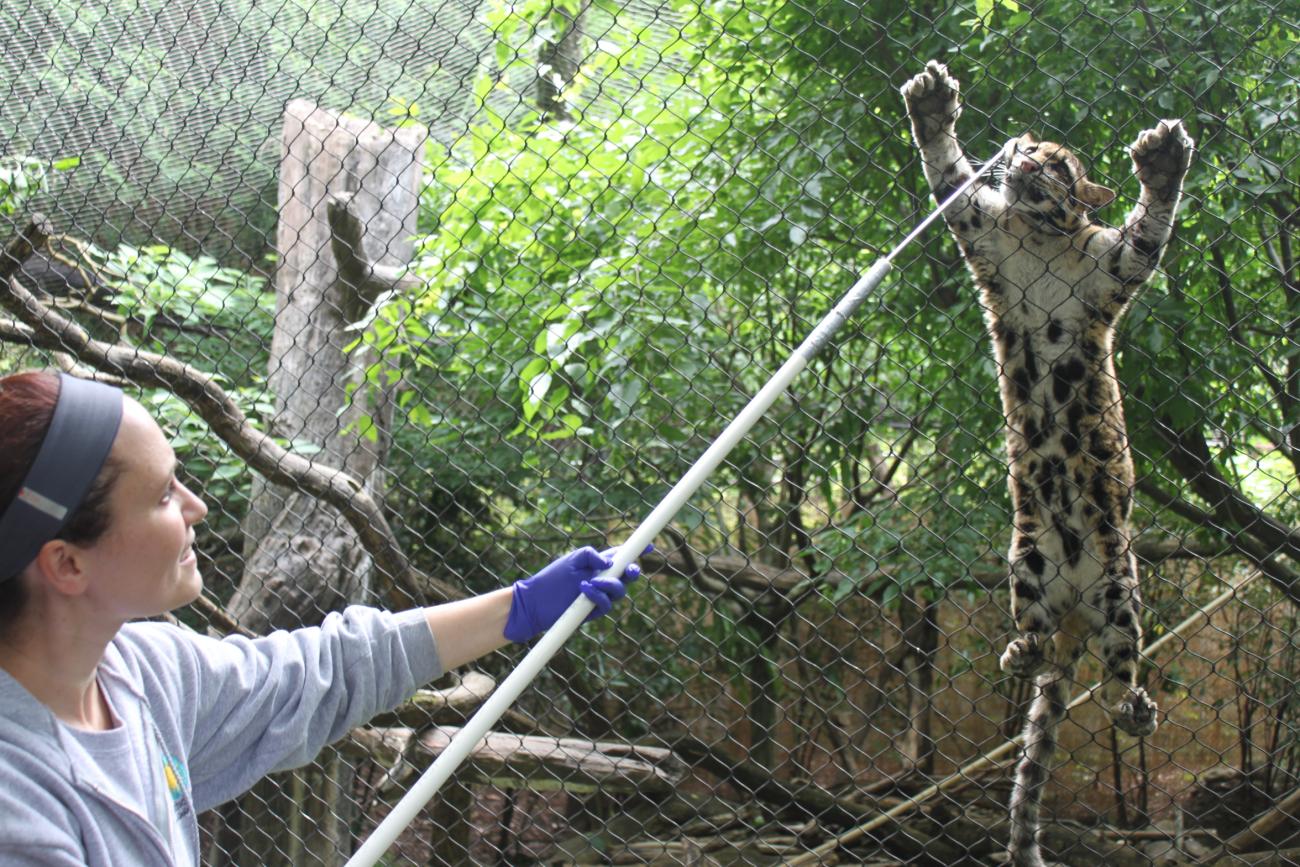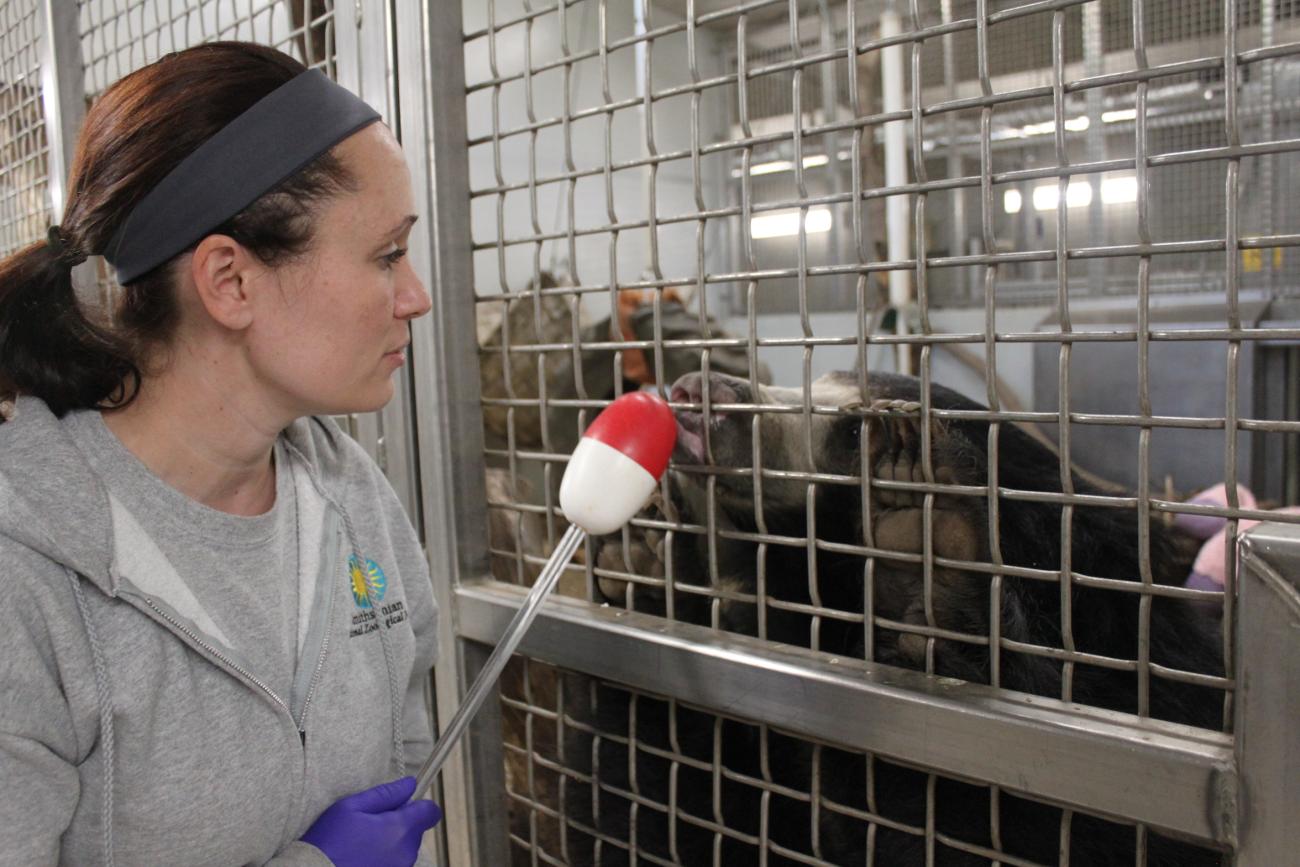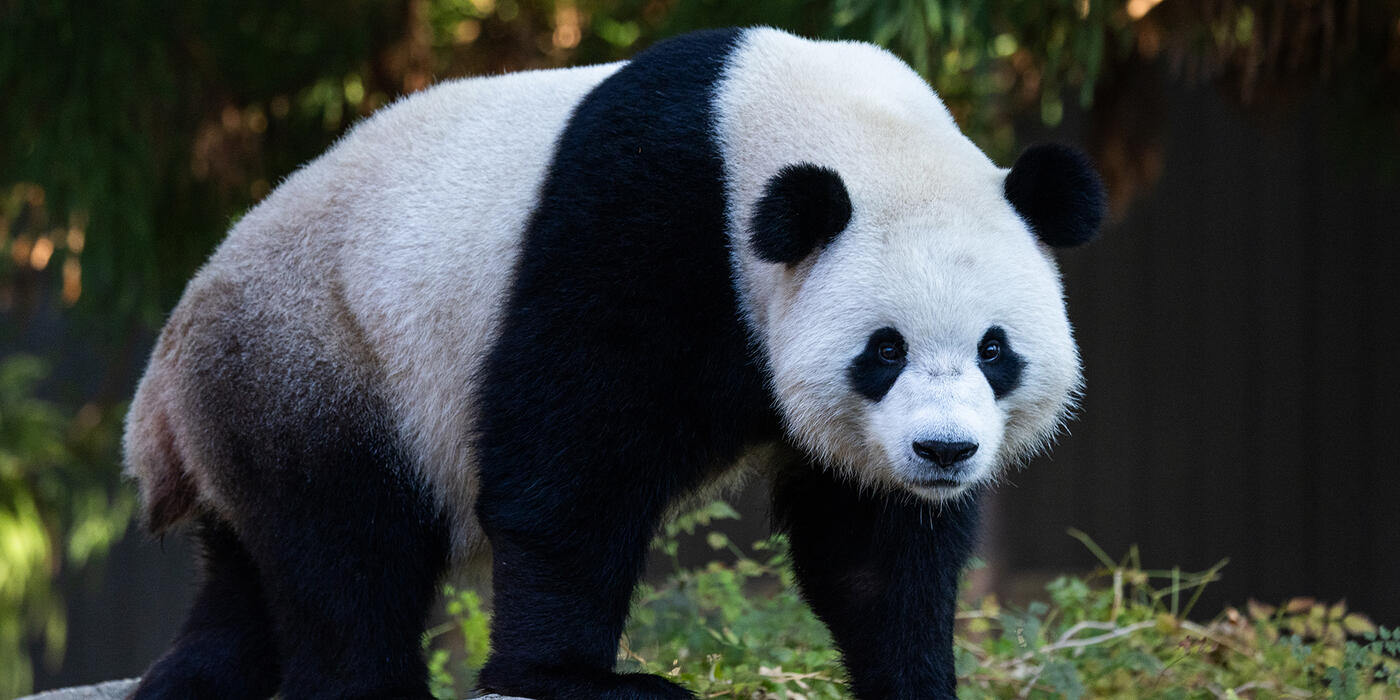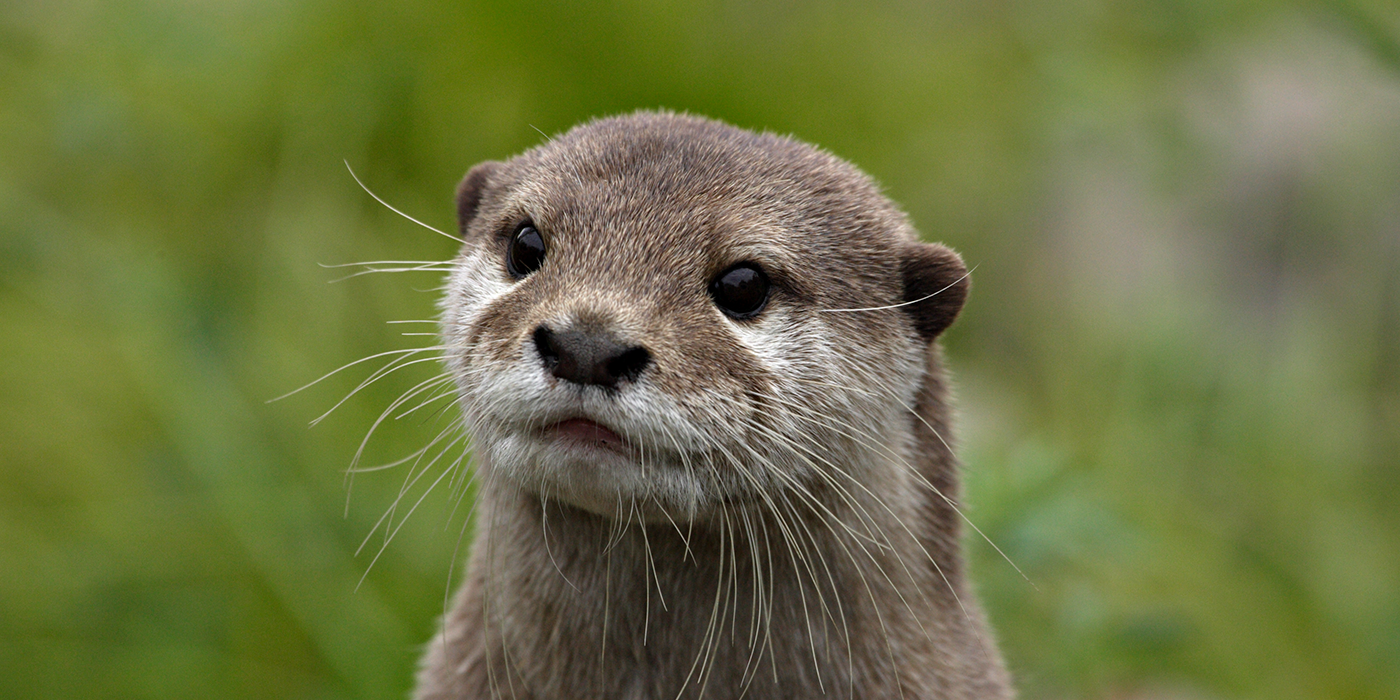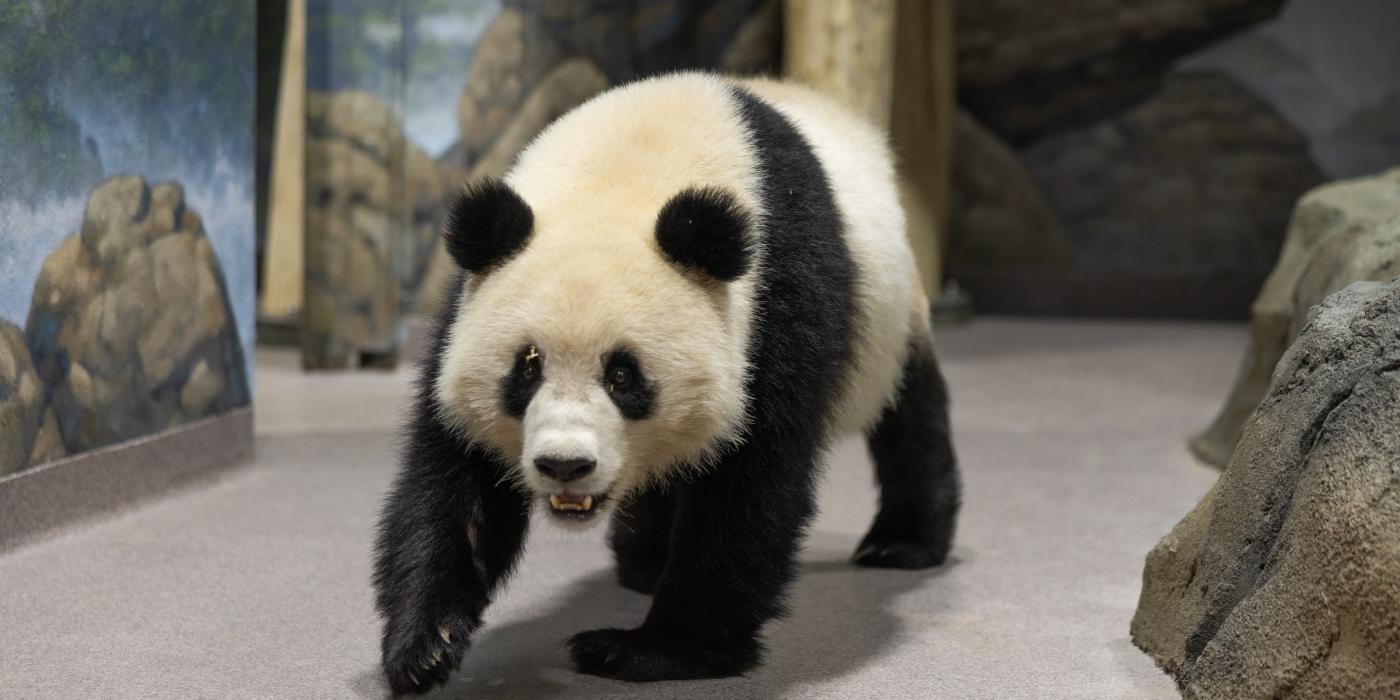A Day in the Life of an Asia Trail Keeper
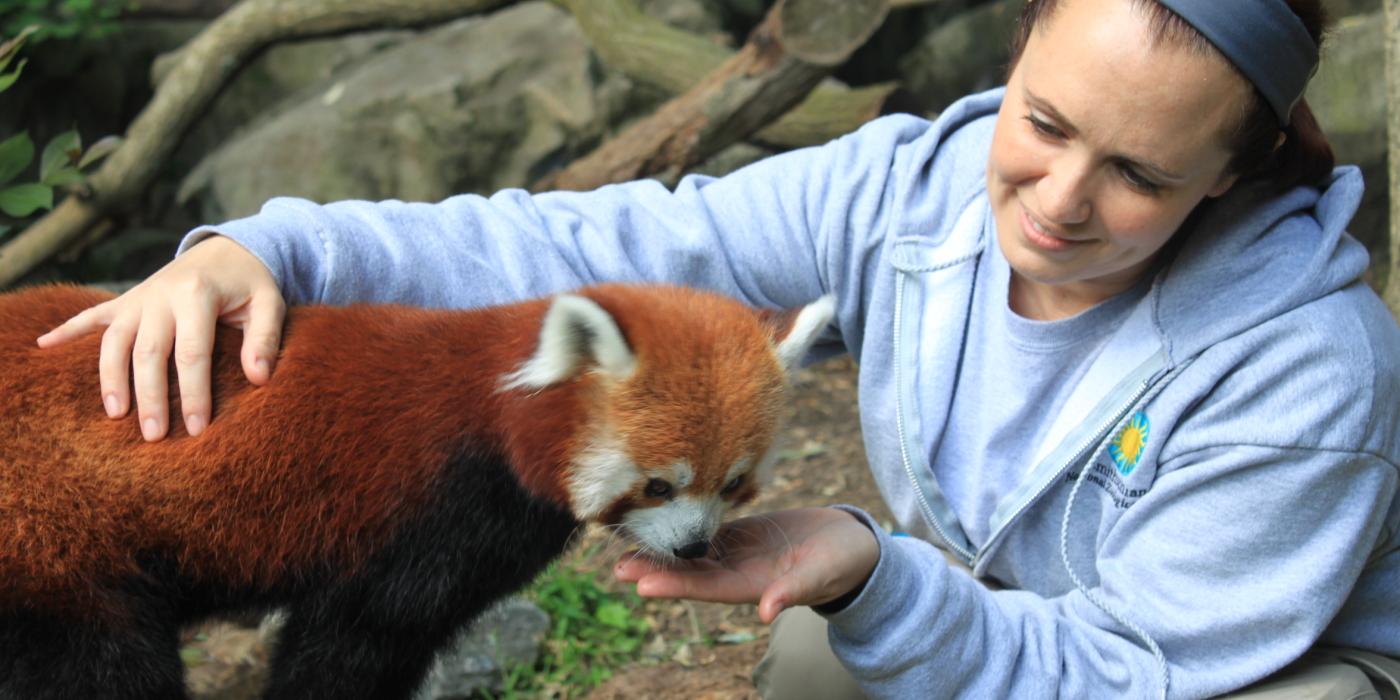
Training sloth bears, making an otter puzzle feeder and researching red pandas by studying their poop. It’s all in a day’s work for animal keeper Tallie Wiles! Follow her story for a behind-the-scenes glimpse into a day in the life of an Asia Trail keeper. Asia Trail is home to the Smithsonian's National Zoo’s giant pandas, red pandas, Asian small-clawed otters, clouded leopard, fishing cat and sloth bear.
The first thing I do when I arrive at the Zoo is a visual check on all of the animals in my charge. In this photo, I’m examining one of our Asian small-clawed otters in an off exhibit area to make sure that he is healthy, behaving normally and has no cuts or scrapes on his body.
Several of the animals on Asia Trail have access to their outdoor exhibits at night pending the weather. In the morning, we call the animals inside so that we can clean their outdoor yards and assess the exhibit. Since our 8-year-old fishing cat, Lek, is most active in the morning, we use this time to train him. On his way inside, he passes through a training chute, part of which can be removed in case we need to bring him to the veterinary hospital. Keepers work with him every day to ensure that he is comfortable in this area, offering him food as a reward for stationing (standing still) in this area of the chute.
A red panda’s diet consists mostly of bamboo. Keepers provide our pair, Tusa and Asa, with fresh bamboo throughout the day. To ensure they’re getting the vitamins and nutrients they need, red pandas also receive leaf-eater biscuits.
Red pandas have thick fur coats, so the best way for us to assess their body condition is by gently feeling different areas of their bodies, such as their ribs and hips. It is important that the animals are acclimated to our touch so we can take these measurements and apply topical treatments if necessary. We also get weekly weights on the red pandas to assist in determining body condition. Tusa and Asa are willing to participate in tactile training as long as they are rewarded with their favorite treats: grapes and apple slices.
Researchers at the Zoo and Smithsonian Conservation Biology Institute’s endocrine lab are hoping to better understand the biology of red pandas by looking at their hormones. A great way to look at an animal’s hormones is through its poop! In order to know which red panda the fecal sample came from, we put glitter on the fruit that we use as rewards during training sessions. The following morning, we can tell which fecal sample belongs to which red panda; Asa’s poop has gold glitter, and Tusa’s has green glitter.
Fishing cat Lek’s diet contains a large amount of frozen fish; however, vitamins can be lost during the freezing process. The vitamin supplement comes in a paste and doesn’t taste very good, so to make it more appetizing we inject the paste into beef chunks, which are Lek’s favorite treat.
For enrichment, our clouded leopard and fishing cat receive a variety of bags and boxes filled with their prepared meat and fish diets. Keepers hide these items around the yards so the cats have to use their sense of smell and sight to find where their food is hidden. The cats rip and tear at the enrichment to get the meat inside, simulating the behaviors they would use while hunting in the wild.
Asian small-clawed otters have a very fast metabolism and process their food very quickly (every two to three hours). Because of this, we feed them anywhere from four-to-eight times a day, depending on the season. They receive food from an automatic dispenser overnight.
Asian small-clawed otters are very tactile and use their partially-webbed paws to find food. To encourage them to use that natural ability, keepers created puzzle feeders out of PVC tubes by drilling holes into the pipes and placing caps at both ends. Keepers cut fish into small pieces and fill the tubes with the fish. We then scatter the tubes around the yard for the otters to find. This provides them with both physical and mental exercise, as our otter Kevin demonstrates in this photo.
To give our otters some mental exercise, we offer them a chance to do a medical training session. In this photo, we’ve asked one of the otters to enter a clear Plexiglas box, which allows our veterinarians to safely take a radiograph while he or she is awake. The biggest challenge is having the otter stand still long enough for our vets to get a clear image. They don’t mind staying in the box, as long as they are rewarded with fish.
The clouded leopard training demonstration is the best opportunity for visitors to get a good look at Mook, our female clouded leopard. During the demo, we ask her to jump onto the mesh, demonstrating her strength and agility. It also gives us a chance to examine her up close and is a great opportunity for her to exercise.
Toward the end of the day, keepers will do a quick target training session with our female sloth bear Remi. We ask her to touch her nose to the target and, if she does, she is rewarded with her favorite treat: apple slices. This training comes in handy when we need to shift Remi from one enclosure to another, and it enables us to get a close look at her body condition overall.
This article is featured in the July 2017 issue of National Zoo News. Enrichment allows animals to demonstrate their species-typical behavior, gives them opportunity to exercise control or choice over their environment and enhances their well-being. Learn more about the Zoo’s Animal Enrichment and Training Program.

